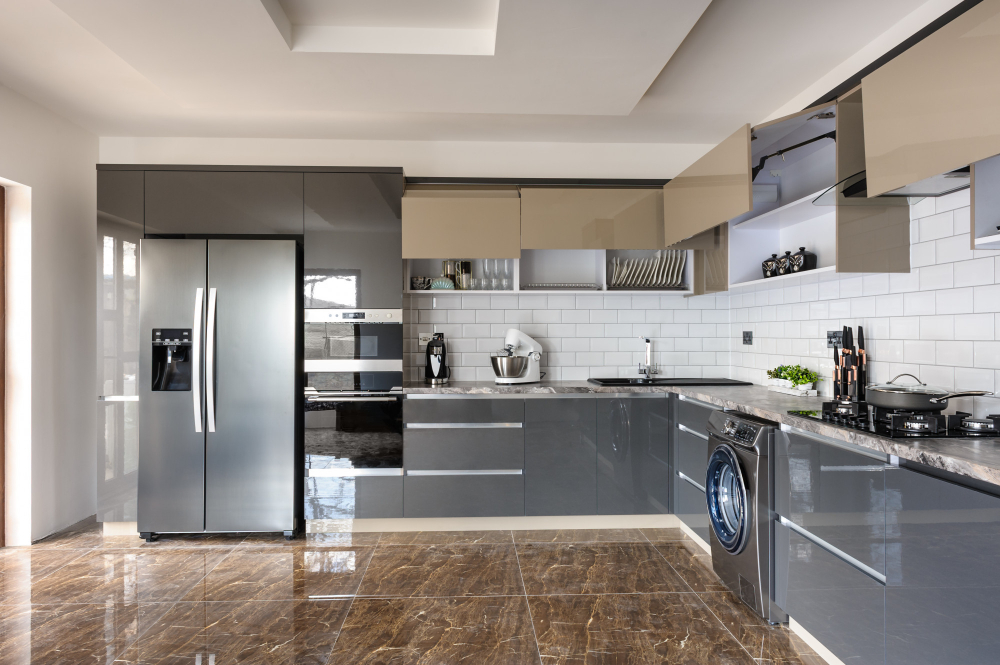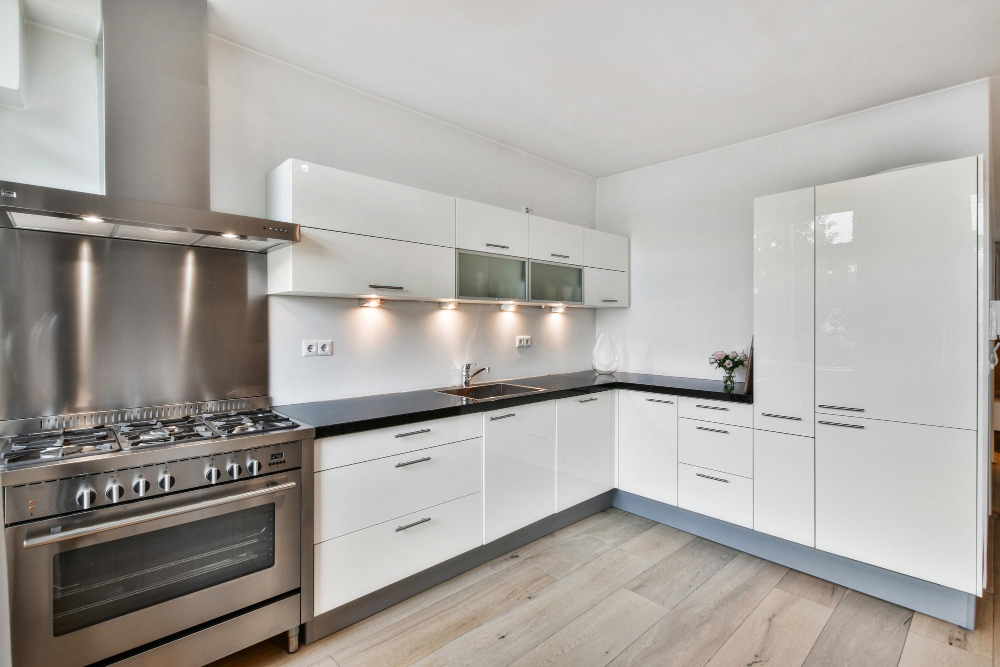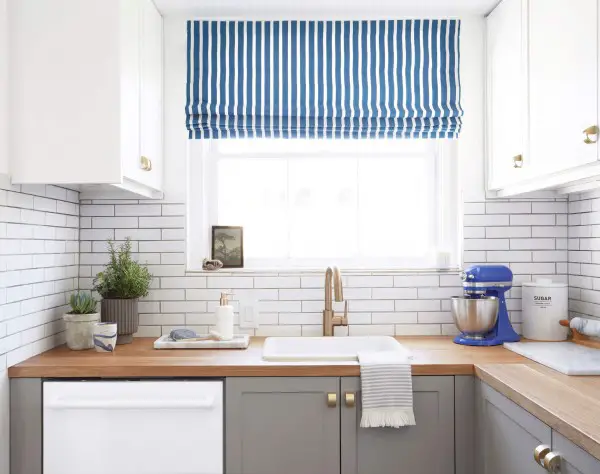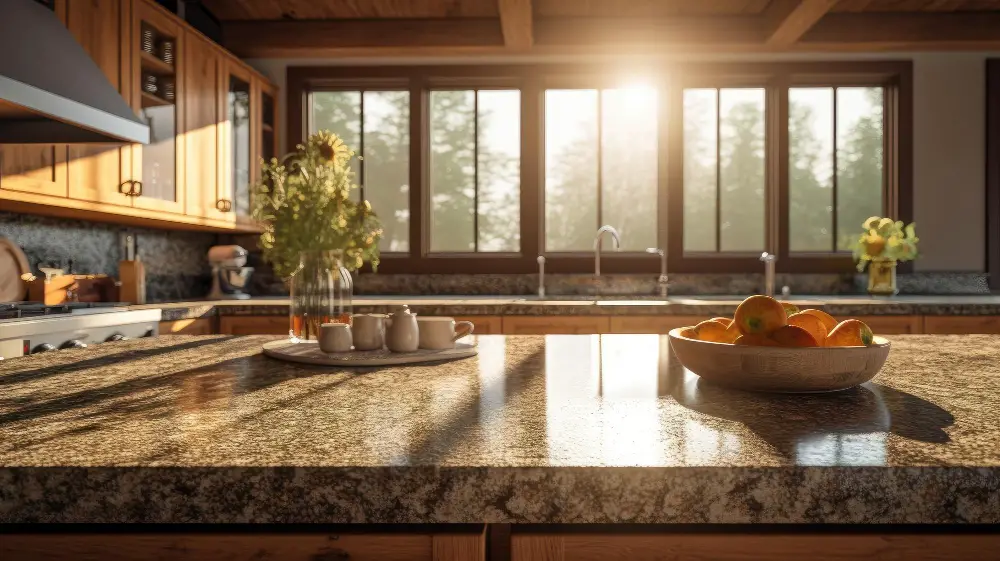Last updated on
In this blog post, you’ll discover a list of today’s most popular kitchen colors to help you inspire your next redesign.
Key takeaways:
- Bold move away from stark whites – deep blues and vibrant greens.
- Subtle burst of warmth and elegance – pastel yellows and soft grays.
- Natural allure of earthy tones – sandy beiges and woody browns.
- Metallic accents – copper and brass for a hint of glam.
- Color alters perception of space and sets mood.
What's Inside
Current Trends in Kitchen Colors
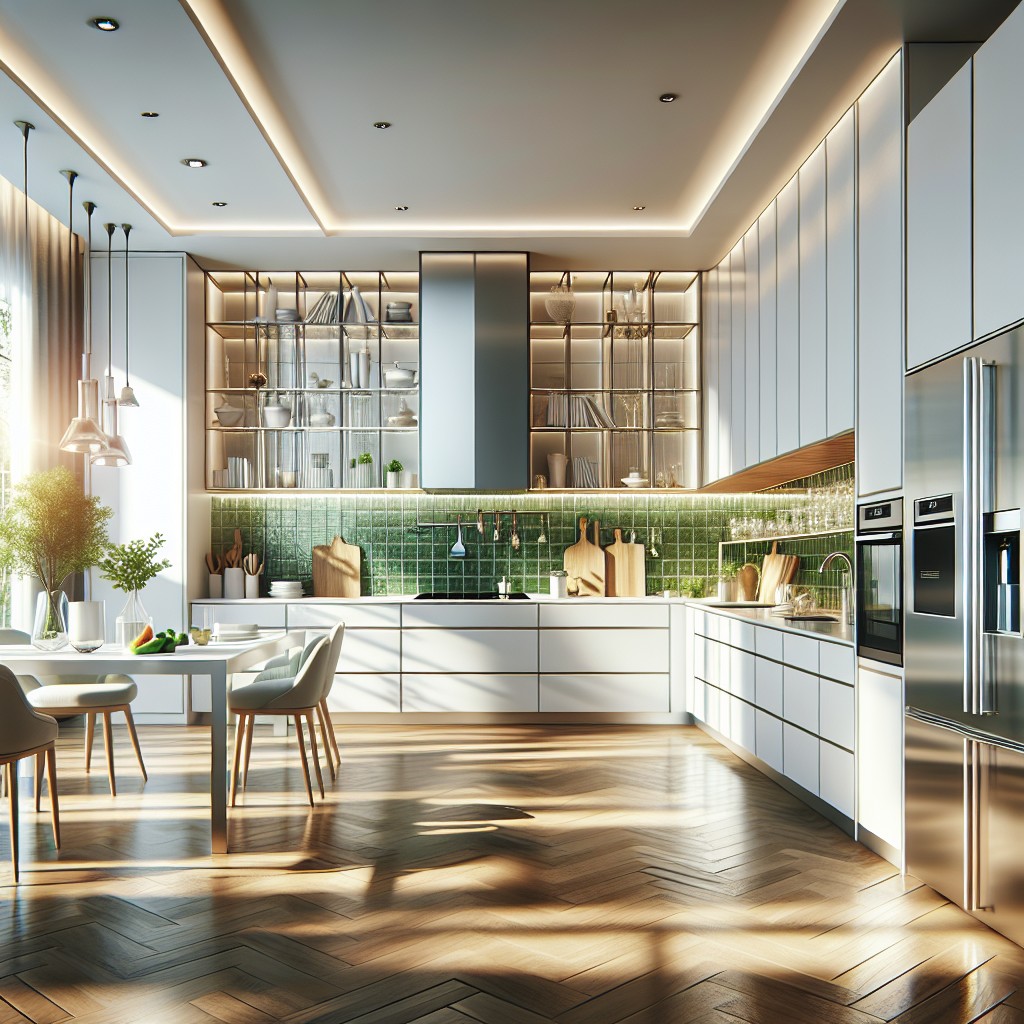
Diving straight into the colorful world of kitchens, we’re seeing a bold move away from the stark whites that once dominated. Deep blues and vibrant greens are now sharing the spotlight, infusing spaces with feelings of calmness or revitalization. For a sleek and sophisticated vibe, charcoal grays and matte blacks are making their mark on cabinets and appliances alike.
Yet, it’s not just about the bold. Pastel yellows and soft grays are gaining traction for a subtle burst of warmth and elegance. And let’s not overlook the natural allure of earthy tones—sandy beiges and woody browns are making their way onto walls, exuding an organic, inviting ambiance.
Amid these trends, the minimalist still has their place with monochromatic color schemes. A single shade, played across different textures and finishes, creates depth without overwhelming the senses.
In the metallic realm, we’ve noticed that copper and brass accents offer a hint of glam against these trending colors, proving that even small details can have a major impact.
With such diversity, these color trends provide ample inspiration to make a kitchen more than just a place for meals, but a true reflection of personal style.
Importance of Kitchen Colors in Design
Color serves as more than just a backdrop; it’s a pivotal player in shaping a kitchen’s personality. First, it can alter perceptions of space: Light hues make a room feel airy and larger, while dark tones bring coziness to expansive areas. Then there’s the magic of mood setting; warm shades of red and yellow inspire culinary creativity and foster appetite, while cooler blues and greens emanate calm and cleanliness — perfect for a space where freshness is paramount.
On the practical side, certain colors can influence the longevity of your kitchen’s design. Neutrals and timeless hues often stand up to the test of time, meaning your kitchen won’t feel outdated as trends shift. And let’s not overlook the psychology of color — it affects our emotions and behaviors. The right color choice can energize a space, encourage social interaction, and even affect the efficiency of those using the kitchen.
Moreover, color has the ability to tie in architectural details, harmonizing with countertops, cabinets, and flooring to create a cohesive look. In essence, color is the design element that binds all the others, ensuring balance and unity in your kitchen’s décor.
How Color Influences Kitchen Atmosphere
Color wields an incredible power over our moods and behaviors, particularly in the kitchen which is the heart of many homes. Bold reds, for instance, can stimulate appetite and convey a sense of vibrancy, but they might also increase the sense of urgency, perhaps not the best choice for a tranquil tea break. On the softer side of the spectrum, blues and greens evoke serenity and cleanliness, transforming your kitchen into a peaceful retreat suitable for a calming cup of herbal tea.
Neutral tones like whites and beiges are the chameleons of kitchen colors. They create a backdrop that allows your culinary creations and design accents to take center stage. Their versatility lies in their ability to adapt to any style, from modern minimalism to rustic charm. It’s also much easier to switch up accessories for a new pop of color when the mood strikes.
Warmer shades like yellows and oranges can imbue the space with a cozy, welcoming vibe, practically inviting conversations and communal cooking sessions. However, it’s vital to balance these vibrant hues to avoid overwhelming the senses, especially in a space where many busy tasks take place.
For those with a penchant for the dramatic, deep, rich colors such as navy or even black, when used thoughtfully, can add a stunning sense of sophistication and depth, especially when paired with strategic lighting to keep the space from feeling too closed in.
What’s key is recognizing that each color sets a distinct tone. Selecting the right shade is a delicate balancing act between personal style, the kitchen’s natural light, and the psychological effects you desire to create within your culinary haven.
Selection Criteria for Kitchen Colors
Selecting the perfect hue for your kitchen is crucial for creating a welcoming environment. Here’s what to consider:
Functionality First: Opt for colors that foster the kitchen’s function as a workspace. Brighter shades can enhance illumination, while darker tones might conceal stains but can make a space feel smaller.
Lighting Influences: Examine the natural and artificial lighting in your kitchen. Sunlit spaces can handle cooler colors without feeling cold, whereas areas with less light benefit from warm tones.
Color Palette Harmony: Coordinate with the colors of adjoining rooms for a cohesive home aesthetic. Complimentary or analogous colors work well for a seamless transition.
Mood Setting: Decide on the ambiance you aim to create. Calm and relaxing? Consider soft blues or greens. Stimulating and appetizing? Yellows and reds might be your allies.
Resale Considerations: If you’re planning to sell soon, neutral colors like whites, grays, or beiges have mass appeal and can be a smart choice.
Remember, the ideal selection combines aesthetic appeal with practicality, enhancing both the form and function of your kitchen space.
Continue reading:
